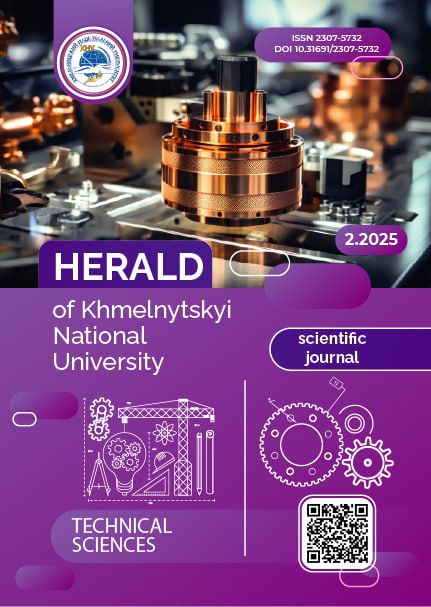VIBRATION DIAGNOSTIC SYSTEM FOR STUDYING TRIBOLOGICAL PROCESSES
DOI:
https://doi.org/10.31891/2307-5732-2025-349-34Keywords:
vibration diagnostics, vibration, friction units, signal analysis, LabVIEWAbstract
The article addresses the issue of measuring and analyzing the vibration characteristics of mechanical systems without disassembly. Vibration diagnostics is one of the key methods for monitoring the technical condition of mechanisms, allowing for the timely detection of potential malfunctions and preventing serious failures. This approach helps reduce maintenance costs and extend the service life of equipment. Vibration measurements make it possible to assess the wear level of components, detect clearances, imbalances, bearing damage, and gear defects.
One of the important aspects of the study is the analysis of vibrations in friction units of machines, as their condition significantly affects the overall reliability and efficiency of mechanisms. It is in friction units that problems most often arise due to wear, insufficient lubrication, or changes in the geometric parameters of parts. Regular monitoring of vibration characteristics in these elements enables the timely detection of potential failures, preventing excessive overheating, energy losses, and a decrease in system efficiency.
The main requirements for a measurement system include high accuracy, stability of readings, and the ability to automate data collection, processing, and storage. Therefore, a review of traditional tools and methods for studying vibration signals used in industrial diagnostics and scientific research has been conducted. The proposed methodology is based on the use of a highly sensitive vibration sensor, a digital oscilloscope, and the LabVIEW software environment.
The acquired signals are transmitted to the oscilloscope, where they are recorded in real time. After that, the data is processed in LabVIEW, where an automated information collection process is implemented. The software allows for noise filtering, spectral analysis, harmonic detection, and the identification of abnormal oscillations. Additionally, a function for saving the obtained results to a file has been implemented, ensuring the possibility of further detailed analysis.
This approach can significantly improve the efficiency of technical maintenance and diagnostics of mechanisms, minimize the risk of failures, and reduce repair costs. It can be useful in various industries, including mechanical engineering, energy, transportation, and aviation.
Downloads
Published
Issue
Section
License
Copyright (c) 2025 ОЛЕКСАНДР ЛИТВИНОВ, ОЛЕКСАНДР ДИХА (Автор)

This work is licensed under a Creative Commons Attribution 4.0 International License.

